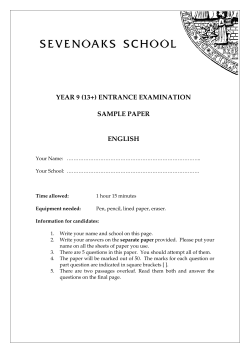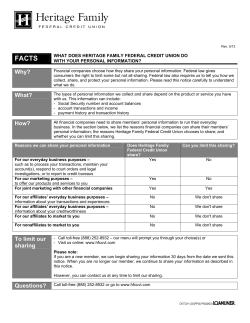
Heritage Rural Tay 646 2 H
Built in the early 1900s, the bridge was required for the farmers to travel between the fields on either side of the train tracks. A bridge was needed because heavy equipment could not cross the railway nor was it safe as the railway became increasingly busy. C. Field Bridge This bridge was part of the Port Hope, Lindsay and Beaverton Railway line off of the Midland Railway route. It was built in the years 1873-1875 as part of the extension of the Midland Railway line from Orillia to Midland. The Midland Railway was later taken over by the Grand Trunk Railway, absorbed by the Canadian National Railroad in 1922. A. Wye River Trestle Bridge A. Wye Trestle Bridge B. Old Fort Bridge C. Field Bridge D. Old Trestle Bridge E. The Hole in the Wall F. Duffy Road/CN Rail Bridge G. Rail Bridge Over Sturgeon River Historic Bridge Locations By 1903, new rail lines were needed for eastbound shipments of western grain. The new rail linked The Georgian Bay and Seaboard Railway ran from Port McNicoll to Dranoel. Port McNicoll became the primary harbour for the CPR. With the added volume this bridge was constructed out of concrete instead of wood. Today the bridge is part of a recreation trail. G. Bridge Over Sturgeon River The Hole in the Wall provided the span over the former route of Hwy 12 for the CPR rail line into Port McNicoll. This line then crossed a bridge, over the CNR line, then a trestle bridge over Hogg’s Bay, and on to the terminus at the harbor. During the trestle bridge’s existence, 1908 -1971, at 2,141 feet, it was the longest wooden trestle bridge in Canada. past. that provide a glimpse into our communities age tour you will discover many homes and sites ing area rich with history, Throughout this heritTay Township is a grow- A HERITAGE TOUR >>> After the war of 1812-1814, colonization roads, together with free land grants to militia and Loyalists, helped to spur settlement. Major roads included the Pentanguishene Rd (later Hwy 93) from Barrie in the west, and the Coldwater Road/Sturgeon Bay Road (later Hwy 12) from Orillia in the east. By 1879, the extension of the Midland Railway (later the Canadian National Railway) west Tay Township stretches east from County Rd 93 and the Wye River to Hwy 400 and north from County Rd 23 (Vasey Rd) to Severn Sound. In addition to the large rural area, Tay includes the communities of Port McNicoll, Victoria Harbour, Waubaushene and Waverley. Tay and surrounding Townships were surveyed in 1820. Tiny, Tay and Flos Townships were named after pet dogs belonging to Lady Sarah Maitland wife of the Lieutenant Governor of Upper Canada from 1818-1828. By 1890 , Waubaushene and Victoria Harbour were both company mill towns serving as headquarters for 2 of the largest lumbering operations in Canada. By 1912, the CPR had built Port McNicoll as its main terminus for rail/water transportation on the Great Lakes. Many pioneer families found jobs in the lumber companies, on steamships, and on the railways. Many of their descendants still reside in Rural Tay, some still living in the original family homes. Many pioneer families immigrated from England and Ireland. Their first homes were often built of logs cut in the bush. Thousands of acres of trees were felled and burned to clear the land for farming. to Midland from Orillia and the North Simcoe Railway north to Penetanguishene from Barrie, greatly accelerated settlement and development. A Brief History of Rural Tay ... Rural Tay Heritage E. The Hole in the Wall Tay Township Heritage Committee Explore and learn about some of the historic bridges that served our township for over a century. Heritage bridges ... Heritage Tour # 4 >>> Heritage Tour # 13 >>> 6462 Highway 93 Built in 1926 as a school to serve the four townships Tay, Tiny, Flos, and Medonte the school has two rooms and served many students from the Waverley area. The school remained open until 1960 when the students were dispersed between Elmvale, Wyevale, Wyebridge, and Victoria Harbour. The building has since been used as a craft shop and is currently a veterinary office. The original structure has been well maintained and has many of the original features. The bell tower is original, the bell is no longer kept in the tower. Heritage Tour # 9 >>> Heritage Tour 5 >>> 1831 Rumney Rd This home is one of the three century farms in Tay Township. Purchased by Matthew Rumney in 1888 the home has remained in the family ever since. Matthew Rumney began cultivating the land in 1880 even though he did not gain title to the land until eight years later. Over time the family cleared 400 acres of land and built two barns along with the house. One of the barns was destroyed by fire in 1976 but the other is still in use on the property. Today a veterinary clinic is owned and operated on the property by Dr. Joel Rumney and his family. 6177 Vasey Road This home was built in 1890 and was originally owned by Tom Britton. Shortly thereafter, the home was sold to the Scarlett family who had moved from Cauan, Ireland in 1886. John Scarlett, had married the original owners daughter Matilda. Unfortunately she passed away shortly thereafter. In the years to come the Scarlett family home would come to be known as “Saints Rest” and served as a refuge for immigrants from Ireland to stay at while they prepared their own homes in 3706 Vasey Rd Originally a school house used by many of the children in the rural area. Now a private residence with many original and unique features such as the old chalkboards and school bell. Originally built as a school house in 1926 by the school board of Simcoe County. S.S No 14 Tay was a one roomed school house and remained open until 1960 when students were transferred to Waubaushene. The present owners have tried to maintain many of the original features. The original doors, windows, wainscoting, chalkboards, and bell are all still in their original location. The original boys and girls separate entrances remain as do the separate washrooms. The old school bell is still in place in the bell tower and has been maintained. The owners have preserved and kept the original well and hand pumps which, many years ago, were used by the school and many of the local area farmers during the steam threshing season. Heritage Tour # 11 >>> 4320 Vasey Road John Alexander Swan, the builder and original owner of the home came from Ireland in 1864. The 100 acre property was bought in 1869 and John and his sons moved there one year later in 1870. He then sent for the rest of his family to come over. The family home was not completely built until 1882, which was the date found on the brickwork of the house. Heritage Tour #s 1-7>>>WAVERLEY The village of Waverley was originally established as a stop on the Penetanguishene Road for mail to be delivered and for travellers to rest. Many of the first settlers to Waverley were retired soldiers from the Naval Establishment. The community was first called Bannister’s Corners after an early settler, but was renamed in 1858 after the 1814 novel “Waverley” by Sir Walter Scott. the Waverley area. The Swan family had a very large farm with many workers from the area and a large amount of livestock. There were many fish symbols found on the diamond peaks of the barn which could indicate that the family were Christians. 15 16 17 Waverley Rural Tay heritage locations Rural Tay is home to many historical sites and houses. This tour will take you through some of our local history. Many of the sites are featured throughout this booklet with further historical information. We hope you enjoy your heritage tour of our community! Heritage Tour Locations 1. 242 Darby Rd - St. John’s Anglican Church 9. 1831 Rumney Road 10. 1806 Reeves Road 2. 6517 Highway 93 11. 4320 Vasey Road 3. Waverley United Church 12. 1369 Gervais road 4. 6462 Highway 93 - Old School/Animal Hospital 13. 3706 Vasey Road - Old School House 5. 6177 Vasey Road 14. 6. 1005 Bannister Road 7. 6152 Vasey Road 8. 1796 Rumney Road 1645 Rosemount Road - St. Ignace II Martyrs’ Shrine Ste. Marie St. Louis 15. 16. 17. Please note these properties are NOT open for visitation Heritage Tour # 14 >>> 1645 Rosemount Rd.—St. Ignace II In 1615, Roman Catholic Jesuit missionaries established the first Christian mission in Canada in this area. They called it “Huronia” and it stretched throughout North Simcoe. In 1649 St. Ignace II, was a new Wendat (Huron) village on a plateau 50 ft. above the Sturgeon River. The village comprised 29 buildings, including a chapel, and was surrounded by 2000 ft. of fortifications. About 2000 people lived there. The people lived in long-houses 20 ft. St. Ignace Village Map wide and 100 ft. long, with 20 – 100 people per house. A census of the Huron nation by the Jesuits in 1639 reported 32 active villages and 20,000 people. 1649 saw the end of the war between the Wendats and their French allies and the Iroquois. A large Iroquois war party attacked and overran several Wendat villages, including St. Ignace II. At nearby St. Louis(#17) the Iroquois captured two Jesuit missionaries, Jean de Brebeuf and Gabriel Lalement, and brought them to St. Ignace where they were tortured and killed. This led the Jesuits to abandon their headquarters at Ste. Marie(#16) and retreat to Christian Island and then Quebec. In commemoration of the Jesuits, the Martyrs’ Shrine(#15) was opened near Ste Marie in 1926. In 1930, Pope Pius XI canonized Brebeuf and Lalemant as Saints. They were among the first Saints of North America. In 1932, Alphonse Arpin of Midland suggested the site of martyrdom would be found by Lot 5, Con. 9. Together with his associate, Thomas Connon, he found the historic trails to prove his conclusions. Both died in 1936 and later archaeological investigations verified their claim. A plaque on the Rosemount Rd. site commemorates their discovery and the history of the site.
© Copyright 2025











